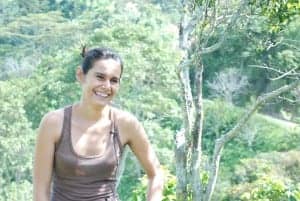How do we offer financial services to exponentially more rural women?
This was the topic of the final day of our three-day workshop that brought together Women’s World Banking Latin American network members and other stakeholders to share challenges, opportunities and lessons learned in expanding financial services to low-income rural women. Together, Interfisa Financiera, Caja Arequipa and Fundación delamujer have provided loans to more than 80,000 rural clients as part of a three-year project with Women’s World Banking. Our first post outlined some of the innovative ways by which financial institutions were able to do this but the question remains, how do we scale these products to the women living in the furthest reaches of rural communities, who because of their household (and farm) duties, have very little time to spend traveling to and engaging with a bank?

More than a loan
Rural women, more so than their urban counterparts, are asking for support to maintain and grow their businesses. Many of the families served by our pilot institutions are starting new business (buying a cow and selling the milk or raising guinea pigs) without experience and are suffering losses as they are finding their way. Women especially tend to have diversified businesses and may invest in several different projects with the hope that one or two will be successful. These realities require services beyond what a financial institution can offer. For instance, we found that clients value any technical advice that loan officers can give. However, this is an inefficient, and most times ineffective, model because it is not a core competency of the bank. Instead, financial institutions can have better results by partnering with local NGOs or governmental agencies that can provide this support. Similarly, women often face challenges in getting their goods to market or have very little negotiating power with middle men, cutting into already razor-thin margins. Partnerships with local cooperatives or trade associations can give her additional options for distributing her products.
Physical access
One of the biggest challenges for institutions will be to create a sustainable financial model to serve rural women in a way that contributes to the bottom line but is still affordable, given the low incomes and profit margins of small rural businesses. To do this there will have to be advances in infrastructure, including mobile and agency banking. For a rural community, a bank agent might be a shopkeeper who has a contract with the bank to provide specific services or a small kiosk that is operated by the bank in a rural village. Mobile banking would provide even more convenience and operating efficiencies, owever, the regulation needs to be in place to allow financial institutions to offer these services. Unfortunately, many countries have a ways to go in this regard. Then, once regulations are in place, partnerships with telecommunications companies could help close this gap if.
Managing risk
Both clients and institutions serving rural families will continue to grapple with the risks inherent in agricultural economies, in particular, weather and price fluctuations. Crop and disaster insurance can help protect both parties as this is a primary reason for loan defaults among this clientele. Access to a savings account can also help rural families manage fluctuation income across seasons or in case of emergency. Our experience has shown that these products and services – insurance, mobile banking, savings –are all more effective when accompanied by financial education. This can be a challenge when clients are dispersed across a wide area, sometimes separated by several hours from a branch. Nevertheless, financial institutions recognize that finding a way to deliver financial education will be a win-win. Women’s World Banking has worked with partners in other markets to deliver customized financial education that is tailored to the needs of women. In Kenya for example, we used a mass market approach by partnering with experts in social soap operas; a similar approach might be successful in this market if properly adapted.
Despite gathering to discuss these difficult challenges, there was a sense of optimism among the workshop participants. Women’s World Banking network members see the business opportunity in rural women and are committed to serving them as part of their social mission. They have developed loans and savings products that women want and are using – which was no small achievement for some of the pilot institutions who were skeptical at the start of this project. Now, together, we are focused on moving forward… exponentially.




